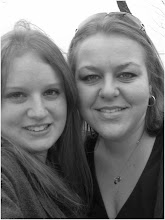In this article, Tom Dunlap, a technology writer and editor, discusses the concerns that users of Facebook and other social networking users have about how well their privacy is being protected while using these websites. The Social Media Habits and Privacy Concerns Survey was recently conducted by uSamp, and it surveyed around 600 men and women about what kind of social networking sites they use and how much personal information they reveal online.
Naturally, Facebook is still the leading social media site. It is followed by YouTu
 be, Twitter, and surprisingly, MySpace. The most important piece of information gathered from this survey is that while 65% of users were "generally comfortable" with the privacy provisions on these websites, they still had some concerns. Among those respondants who don't use social media sites, 73% cites privacy risks as the reason why.
be, Twitter, and surprisingly, MySpace. The most important piece of information gathered from this survey is that while 65% of users were "generally comfortable" with the privacy provisions on these websites, they still had some concerns. Among those respondants who don't use social media sites, 73% cites privacy risks as the reason why.Of those who do use social media sites, 85% said that privacy should be--at least in some part--the users responsibility. But at the same time, 75% said that the websites themselves should also assume responsibility for privacy protection.
Another main point of the survey was the gender differences when related to privacy concerns. That is, women are more concerned than men when it comes to their privacy and personal security. The article says that when it comes to details like phone numbers and addresses, women are more wary than men to reveal that information.
More interesting facts from this article:
- Older women are more likely to use social media websites than older men (60% of women vs. 37% of men visit daily).
- Women over 35 are more likely to use Facebook than men in that same age group.
Overall, I thought this article was very interesting. I think that when it comes to websites like Facebook, everyone's main concern is with privacy and how well their information is being protected. But at the same time, I feel as if social media privacy should largely be the responsibil ity of the user. I mean, they are the ones providing Facebook and other sites with all of this information. Just had to play devil's advocate there for a minute. Personally, I think that Facebook requires a lot of interesting information when it comes to "security." I know that I've been prompted a couple of times to give Facebook my phone number so that they could increase the security of my information. I didn't give it, because it made me uneasy that I'd have to supply more personal information to keep my other personal information secure. All in all, I believe that people should just take really great care with what they are sharing on the Internet, with everything from photos, to statuses and personal information. After all, once it's out there, it's out there forever.
ity of the user. I mean, they are the ones providing Facebook and other sites with all of this information. Just had to play devil's advocate there for a minute. Personally, I think that Facebook requires a lot of interesting information when it comes to "security." I know that I've been prompted a couple of times to give Facebook my phone number so that they could increase the security of my information. I didn't give it, because it made me uneasy that I'd have to supply more personal information to keep my other personal information secure. All in all, I believe that people should just take really great care with what they are sharing on the Internet, with everything from photos, to statuses and personal information. After all, once it's out there, it's out there forever.
Source: http://www.informationweek.com/thebrainyard/news/social_networking_consumer/232600668/social-media-survey-privacy-security-concerns-persist



 I found this picture during my ‘ruined’ Google search. I think that it has the right kind of feeling that I imagine for the bar. This backdrop thing would also be the first thing that the audience would see before the play began.The interior of the “bar” would of course have a bar, but there’d also be a pool table and a couple of tables that match the ones in the audience. The bar and the pool table would be run down as well, but still functional. The overall feeling would be kind of gritty and dirty.
I found this picture during my ‘ruined’ Google search. I think that it has the right kind of feeling that I imagine for the bar. This backdrop thing would also be the first thing that the audience would see before the play began.The interior of the “bar” would of course have a bar, but there’d also be a pool table and a couple of tables that match the ones in the audience. The bar and the pool table would be run down as well, but still functional. The overall feeling would be kind of gritty and dirty.






.jpg)







